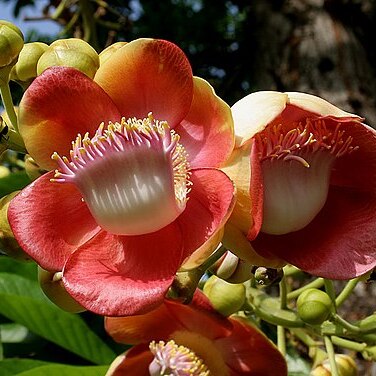Large trees. Inflorescences cauliflorous and ramiflorous racemes. Flowers zygomorphic. Sepals 6. Androecium expanded on one side to form a large, open, not hood-like ligule, the ligule appendages bearing anthers. Fruits large, round, indehiscent, 12-20 cm diam.; seeds embedded in a spongy pulp. Seeds ovate, not angled; cotyledons foliaceous.

